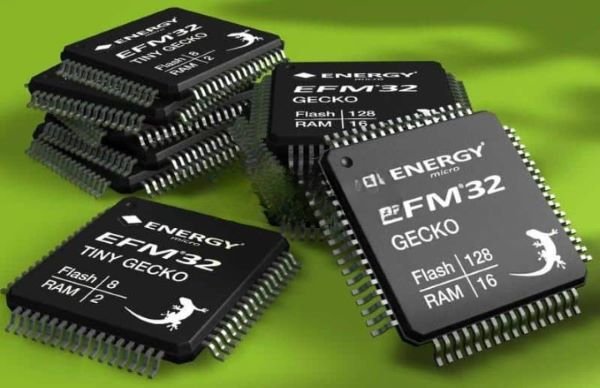In the world of microcontrollers, there are two major players: Microchip’s PIC and Atmel’s AVR. Think of them like big families, each with its own unique qualities. We’ll explore what sets them apart—their design, speed, tools needed for programming, and where they’re commonly used—in a way that’s easy to understand.
Architectural Overview
The architecture of a microcontroller refers to its internal structure and organization. The PIC microcontrollers are based on a Harvard architecture, which means that they have separate buses for program memory and data memory. This allows for simultaneous access to both program instructions and data, resulting in faster execution times.
On the other hand, the AVR microcontrollers use a modified Harvard architecture, known as the Harvard Modified RISC (HM-RISC) architecture. This architecture combines the benefits of the Harvard architecture with the simplicity of the Reduced Instruction Set Computer (RISC) architecture. The AVR microcontrollers have a single bus for both program and data memory, which simplifies the memory management.
Performance Characteristics

PIC microcontrollers are known for their speed and efficiency. They have a wide range of clock speeds, ranging from a few kilohertz to tens of megahertz, allowing for high-speed processing. Additionally, PIC microcontrollers have a rich set of built-in peripherals, such as timers, UARTs, and ADCs, which can be used to interface with external devices.
On the other hand, AVR microcontrollers are known for their low power consumption and excellent power efficiency. They are designed to operate at low voltages, making them suitable for battery-powered applications. AVR microcontrollers also have a rich set of built-in peripherals, similar to PIC microcontrollers, allowing for easy integration with external devices.
Memory and Peripherals
Both PIC and AVR microcontrollers come with different memory options. PIC microcontrollers typically have a smaller amount of program memory (Flash) and data memory (RAM) compared to AVR microcontrollers. However, they often have a larger number of I/O pins, which can be useful for applications that require a large number of external connections.
AVR microcontrollers, on the other hand, generally have a larger amount of program memory and data memory compared to PIC microcontrollers. This allows for the implementation of more complex programs and data structures. However, they may have a smaller number of I/O pins compared to PIC microcontrollers.
Both PIC and AVR microcontrollers have a wide range of peripherals, such as timers, UARTs, SPI, and I2C interfaces, which can be used to interface with external devices. The specific set of peripherals may vary depending on the model and series of the microcontroller.
Development Environments and Tools
Both PIC and AVR microcontrollers have their own ecosystems. Microchip, the manufacturer of PIC microcontrollers, provides a comprehensive development environment called MPLAB X IDE. MPLAB X IDE is a free, integrated development environment that includes a code editor, compiler, debugger, and programmer. It supports a wide range of programming languages, including C and assembly.
Atmel, the manufacturer of AVR microcontrollers, provides a development environment called Atmel Studio. Atmel Studio is also a free, integrated development environment that includes a code editor, compiler, debugger, and programmer. It supports C and assembly programming languages and offers a range of features to simplify the development process.
In addition to the development environments, both Microchip and Atmel provide a range of development tools, such as programmers and debuggers, to aid in the development and testing of microcontroller applications. These tools are designed to work seamlessly with their respective microcontrollers and development environments.
PIC Applications
The Microchip PIC microcontrollers are known for their wide range of applications. They are commonly used in industrial automation, consumer electronics, automotive systems, and medical devices. PIC microcontrollers are well-suited for applications that require low power consumption, real-time processing, and high performance. They offer a rich set of peripherals and are often preferred for projects that involve data acquisition, control systems, and sensor interfacing.
AVR Applications
Atmel AVR microcontrollers, on the other hand, are widely used in applications that require high-level programming and rapid prototyping. They are popular in the fields of robotics, Internet of Things (IoT), and embedded systems. AVR microcontrollers are known for their simplicity and ease of use. They are often preferred by beginners and hobbyists due to their extensive community support and availability of development tools. AVR microcontrollers are also suitable for applications that require low power consumption and real-time processing.
Comparison Table
In order to outline the main distinctions between PIC and AVR microcontrollers, let’s present them in a comparative table:
| Feature | PIC | AVR |
|---|---|---|
| Architecture | Harvard architecture (modified Harvard-based pipeline) | Modified Harvard architecture |
| Instruction Set | PIC16, PIC18, PIC24, dsPIC | AVR8(ATtiny, ATmega) |
| Flash Memory | Up to 512 KB | Up to 256 KB |
| RAM | Up to 32 KB | Up to 16 KB |
| Speed | Up to 64 MHz | Up to 20 MHz |
| Peripherals | Wide range of peripherals | Wide range of peripherals |
| Development Tools | MPLAB X IDE | Atmel Studio |
| Community Support | Large Community Support | Large Community Support |
| Cost | Relatively lower cost | Relatively higher cost |
Conclusion
In conclusion, PIC and AVR microcontrollers are like two different characters with their own strengths. PIC is fast and efficient, great for things that need to move quickly. AVR is more about saving power and working well with batteries. PIC has lots of connections, while AVR can handle more complex tasks. They each have their own special tools for programming, too. PIC is often found in gadgets and industrial stuff, while AVR is popular for robots and smart gadgets. They’re both important in their own ways, depending on what you need them for.

